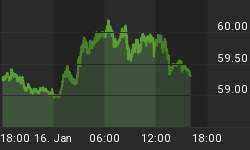It might as well be July in San Francisco. There’s fog about why any investor would want to hold convertible bonds in her portfolio, and I’m here to clear that fog away. Their yields aren’t high, their credit ratings often look shaky, and the bonds themselves are quite hard to understand due to their hybrid nature and built-in options.
The answer, in short, is diversification.
As a rule of thumb, convertibles provide two-thirds of the upside of common stock with one-third of the downside. The first part of this equation sounds pretty good, but we’ll ignore it. Individual investors can’t cherry-pick a convertible to suit their fancy. Even if a good one is available, you’d have to pay dearly for it in commissions. This is a market for asset managers and hedge funds with pockets millions of dollars deep.
That said, there are convertible security funds available for individuals. But buying funds means fund managers select the bonds, which diminishes the upside potential we’d have if we picked the best of the best ourselves. Plus, there are fees.
Since realizing the full upside of convertibles poses a lot of challenges for individual investors let’s focus on the one-third downside: that convertible bonds may be less volatile than their stock or bond counterparts. Take a look at this chart.

The chart shows that from December 2003 to December 2013 convertible bonds were more than 2 percentage points less volatile than stocks, represented by the S&P 500 index. Adding convertibles to a portfolio of stocks lowered the volatility of the overall portfolio too.
Convertibles are less skittish than stocks on the downside because of the bond component convertibles have: the stream of coupon payments and the principal repayment at maturity. Although convertibles’ coupons tend to be lower than those of straight-out bonds, they are a desirable feature when the going gets tough. In other words, convertibles have a floor that the bond’s price won’t fall through absent a default-like event.
The one and only convertible bond fund my team holds in its portfolio, we hold for downside protection and diversification. The fund has a robust portfolio of 97 investments, including 37% allocated to the technology sector and 17% to consumer non-cyclical. It has a third of its holdings in investment-grade bonds, which is particularly important because a lot of convertible securities have junk-bond status.
In short, this fund is far better than your average convertible fund. That’s why we recommended it, and it’s why it’s earned over 20% since. Its solid portfolio and a growing stock market helped the fund deliver excellent results for a “boring†investment. We recommended it when interest rates were rising because we liked where it was going: up, supported by the increase in the S&P 500.
Even if the stock market goes down convertibles will not fall too far (remember the one-third downside rule). This is the stability we sought in this investment.
We like our pick, but we’re cautious about the vast majority of convertible funds available to individual investors. We do, however, like the diversification they provide. We invested in the one that looked solid and are quite pleased.
Of course, I can’t blurt out the name without betraying the trust of our subscribers, so we’re offering a risk-free trial subscription to our retirement-focused newsletter, Miller’s Money Forever. Sign up today and gain immediate access to our favorite convertible bond fund and our entire Bulletproof Portfolio. If it turns out we’re not your flavor, let us know within the first 90 days and we’ll return every penny you paid, not questions asked. Click here to start your trial subscription now.
The article Why There’s Just One Convertible Bond Fund You Should Hold Now was originally published at millersmoney.com.
















